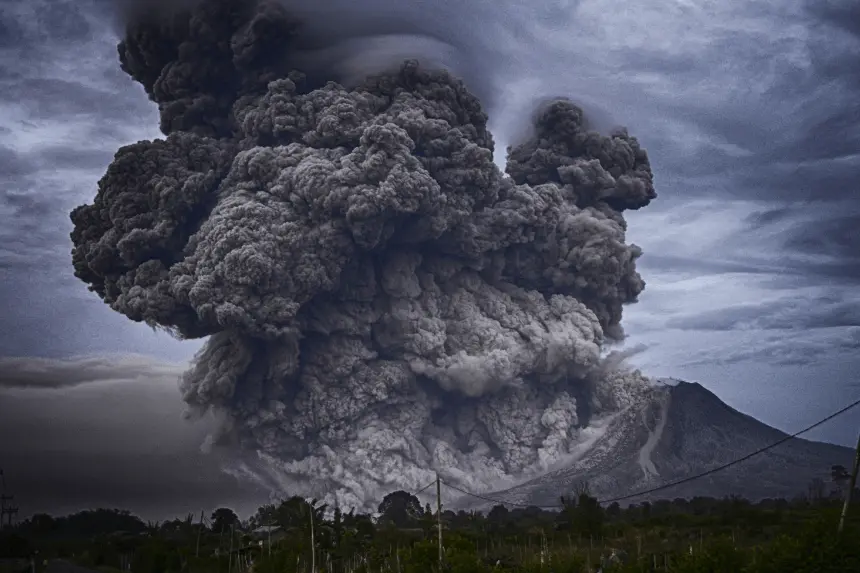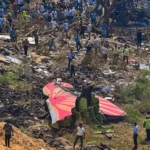Widespread disturbance of air travel has resulted from Mount Lewotobi Laki-Laki’s eruption on Flores Island, Indonesia. Authorities issued a maximum level alert on Tuesday as the volcano erupted ash more than 11 kilometers into the sky. Several airlines have had to postpone or call off flights to and from Bali. As volcanic activity persists, officials have advised locals and visitors to stay wary. The situation has also resulted in lahar flood threats and warnings regarding possible health hazards from ash.
- What set off the extensive flight cancellations?
- In what way have authorities responded to the eruption?
- Exist hazards outside the immediate Ash Cloud?
- Why Is Mount Lewotobi Considered One of Indonesia’s Most Active Volcanoes?
- How is air travel being managed through the crisis?
- How Are Residents Protected Right Now?
- Could this eruption influence travel or global aviation?
- As Mount Lewotobi’s Eruptions Persist, What Actions Are in Place?
What set off the extensive flight cancellations?
The volcano started to blast a large ash plume at 17:35 local time. Flight cancellations result from the major risk the height of the ash cloud presents to aircraft engines. Though Bali is west of the erupting volcano on Flores, airlines including Air India, Virgin Australia, Singapore Airlines, Jetstar, and Air New Zealand immediately canceled or delayed flights to and from Bali.
At Bali’s I Gusti Ngurah Rai International Airport, more than 20 flights had been canceled by midday. Particularly those run by AirAsia, domestic flights to Flores suffered as well. Considering the extent and distribution of the volcanic ash cloud, the decision was taken in line with aviation safety criteria. Here is the link to our article on Bali Travel Disrupted
In what way have authorities responded to the eruption?
Citing ongoing volcanic activity, Indonesia’s volcanology agency set the highest alert level. Mount Lewotubi Laki-Laki was surrounded by a 7-kilometer exclusion zone. Those living close to the volcano were advised to flee and refrain from engaging in outdoor sports.
At least one village has been evacuated from ashfall, according to reports from the National Disaster Mitigation Agency. Furthermore advised to wear face masks to prevent inhaling volcanic ash are people living in surrounding areas. Still detected are tremors, suggesting the eruption might not be over yet.
Exist hazards outside the immediate Ash Cloud?
Certainly. Strong rain could cause lahar floods, experts caution. Made of volcanic material, lahars are dangerous mud or trash flows that might bury towns and cut off roads. The risk of lahars makes the situation much more important, particularly considering the monsoon season brings erratic rain.
Geological experts keep closely watching the volcano. The head of the geological agency for Indonesia emphasized the possibility of more eruptions and secondary calamities like lahars.
Why Is Mount Lewotobi Considered One of Indonesia’s Most Active Volcanoes?
Two peaks make up Mount Lewotobi: Laki-Laki (“man”) and Perempuan (“woman”). Of the two, laki-laki is the more dynamic. Tragically, killing nine people and uprooting thousands, the volcano erupted several times in November.
Its most recent eruption in May also resulted in an increased alert level. This tendency of repeated activity highlights the need for ongoing observation. One of Indonesia’s most active volcanoes, Lewotob, lies along the Pacific Ring of Fire, an area well-known for regular volcanic activity and earthquakes. Here is the link to our article on the Delta Crash Landing
How is air travel being managed through the crisis?
Volcanology agencies and aviation authorities are working closely with airports. Safe flight paths are being found using analysis of real-time satellite imaging, weather forecasts, and wind patterns. Data from the Volcanic Ash Advisory Center (VAAC) has led airlines to reroute or ground flights.
Travelers are advised to routinely check flight statuses and follow airline and local official advice. For impacted flights, airlines have provided options for rebookings or complete refunds. As soon as it is safe, authorities want normal activities resumed.
How Are Residents Protected Right Now?
Currently in place are evacuation procedures. Ready for displaced people are emergency shelters. Medical teams are on standby to manage respiratory problems connected to ash exposure. In high-risk areas are masks and clean water are being handed out.
Disaster response teams also help to clear roads and evaluate structural safety in impacted areas. Through official channels of contact, the government has also advised residents to remain vigilant and keep informed.
Could this eruption influence travel or global aviation?
Although the direct influence is limited, the knock-on effects can reach outside of Indonesia. An important industry for the area, tourism may temporarily suffer from the eruption of the Bali volcano. Major sites outside the immediate ash zone are still safe, tourists are being told.
The eruption reminds us of the flux of nature for global aviation. Flight cancellations are preventative but required since volcanic ash can seriously compromise jet engines and airframes.
As Mount Lewotobi’s Eruptions Persist, What Actions Are in Place?
Mount Lewotobi is under close observation by authorities and volcanologists for any indication of ongoing or heightened activity. More evacuations and flight cancellations are probably to follow if eruptions get worse. Plans of contingency have been triggered to guarantee a quick and coordinated reaction. The Bali volcano eruption draws attention to Indonesia’s Pacific Ring of Fire-related vulnerability to natural disasters. Fortunately, a quick response has so far avoided any casualties. Protection of life and property still depends on constant readiness and awareness.








